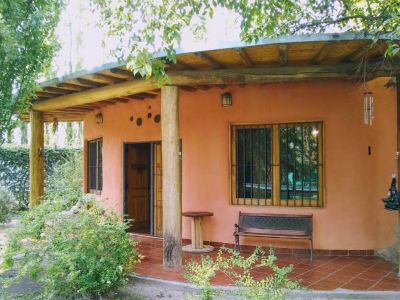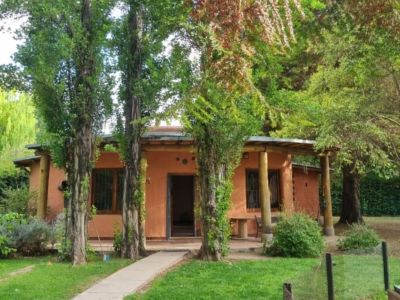This piece of advice is given by every single denizen of Mendoza: do not leave the province without visiting its neat and coquettish capital city. Therefore, we made all necessary arrangements with the people from Kahuak Travel Agency and they picked us up at Hotel Apart Vendimia (where we were staying) at 4pm.
As the afternoon sunshine raised the thermometer up to almost 35 degrees Celsius, our shuttle arrived. We were the last members of the group to be picked up, so we headed straight to our first destination: the foundational area of Mendoza.
At the very center this zone lies the main square, named Pedro del Castillo, after the founder of the city (a Chilean) in 1561. Before we went around it, however, we stopped at the Franciscan ruins of a temple built in 1731 by the Company of Jesus and which was granted to the Franciscan Order towards 1798.
City tour around Mendoza Capital City
This is nothing but the former cathedral of the colonial city, which fell apart as a result of the big earthquake that hit the city in 1861. Its architecture and nooks took us back to the old times, to a Mendoza that was still emerging and searching its own destiny within an Argentina that was being built.
As we crossed the square, we reached the Foundational Area Museum, inaugurated in 1993. It houses various traces of the old colonial city: the cabildo ruins, an old slaughter house and the ancient underground chamber, from where the fountains that supplied water to the old city may be observed.
Afterwards, we went deep into the newest part of town only to reach the impressive General San Martín Park. Javier, our guide, pointed out that the city has been developed with very particular urban details, such as the open irrigation ditches to distribute humidity all throughout the city (Mendoza features a semi-arid climate) or the wide sidewalks, the layout of the avenues and the settlement of several squares. All these components make it easier for dwellers to respond properly in case of an earthquake.
As we crossed the sumptuous portal to access the park –presided over by a condor and the provincial coat of arms–, temperature suddenly dropped by approximately four degrees. Therefore, the locals use this 420-hectare venue to go for a ride or practice sports, as well as to find relief during hot summer nights, when they stay in this place until the early hours of the morning.
Nature and History
General San Martín Park was inaugurated in 1906 and it is the work of the great French landscape architect Carlos Thays. No wonder it features a great variety of trees (over 300 species brought along from the different continents), streets and delightful promenades, a lake with a Regata Club on its shore and a zoo visitors should not miss.
But the tour was not over yet. We continued towards the West and up Cerro de la Gloria (The Hill of Glory). Our target: reaching 960 meters of height, where the Andes Army Monument stands. Of course we made a stop on the way to have a look at the Greek Theater, where every year the new Grape Harvest Queen is crowned. We took advantage of the opportunity and we also took some pictures of the unique sight of Mendoza featured from the heights.
Once we got to the end of the road, our eyes were invaded by the majestic sculpture –made of 14 tons of bronze- that pays tribute to the army led by General José de San Martín. This fabulous piece was made by Uruguayan sculptor Juan Manuel Ferrari in France and inaugurated on February 12, 1914.
The artist did not trust any piece to chance. Every one of them has its own meaning –whether literal or symbolic- related to the deeds of San Martín, his generals, his army and also the people of Cuyo.
Kahuak’s people still had a surprise for us at the end of the tour: a visit to the traditional chocolate factory in Mendoza called La Cabaña. At this venue, some chocolates welcomed us and we were shown around the facilities to see how the various types of chocolates and alfajores are made.
This was the end of the tour. We were a little tired but convinced that we had got to know a city we were most unlikely to forget.
Pablo Etchevers
Eduardo Epifanio
Contact of the excursion or tour
Kahuak
Rivadavia 234, Mendoza, Mendoza, Agentina
Phone: +54 261-4238409
Cell phone: +54 261-4177281







































